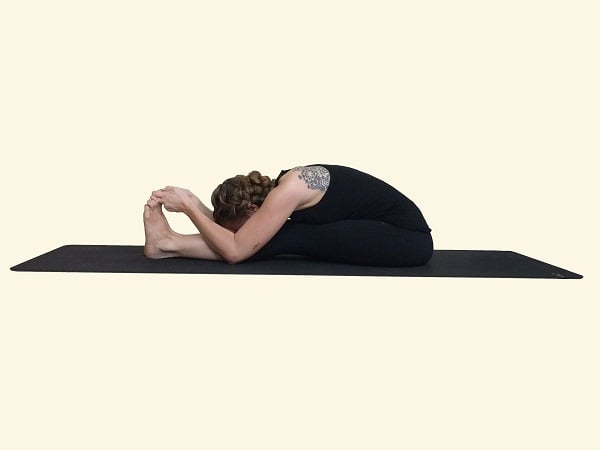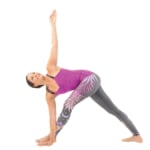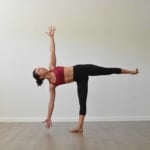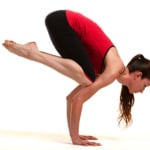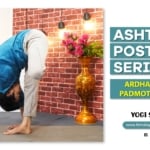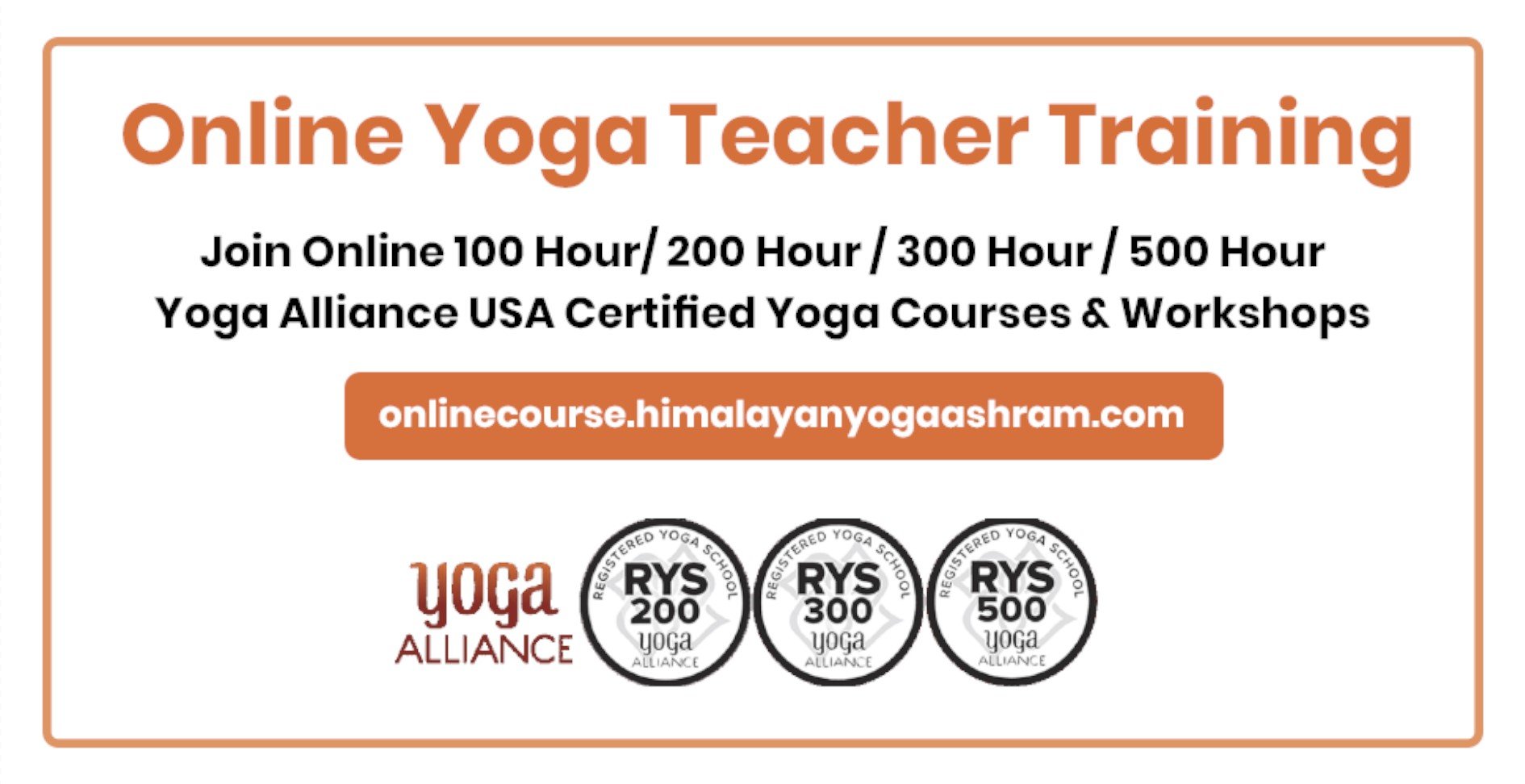Pada Prasar (Legs Spread Intense Stretch of the West)
By Himanshu JoshiYogaasana, Pada Prasar, Pada Prasar (Legs Spread Intense Stretch of the West), yoga, yoga asanaIn Sanskrit “Pad” means “legs”, “Prasar” means “Spread”, “Paschima” means west which refers to the “Back side of the body” and “Uttana” means “Intense stretch or extended” and means “pose”. In English meaning is “Legs Spread Intense back stretch”.
Position : Sitting
Type : Seated forward bend
Spiritual Awareness : Mooldhara and Swadisthan chakra
Physical Awareness : Back, hamstrings, chest, abdomen, shoulders. Extended stretch to the inside of the legs and muscles between the shoulder blades.
Dosha Suitability : Vata and Pita can also benefit
Introducery Asanas : Triyak Bhujangasan, Chakrasan, Matsyasan
Procedure:
- Sit with the legs spread apart as wide as possible.
- Interlock the fingers behind the back. This is the starting position. Inhale in the starting position.
- Turn the trunk to the right. Raise the arms up behind the back. Exhaling bend forward over the right leg. Keep the arms straight. Try to touch the knee with the nose.
- Hold the position for as a long as is comfortable. Breathe slowly and deeply in the final position or hold the breath if the it is held only for a few seconds.
- Inhale, raise the trunk and lower the arms.
- Turn the left and repeat the movement on this side.
- Return to the centre. Exhale, bend forward and try to touch the forehead to the floor directly in front of the body while raising the arms as high as possible from behind. Breathe slowly and deeply or retain the breath if it is held for few seconds only.
- Hold the position for as long as is comfortable.
- Return to the upright position, lowering the arms.
- This completes one round.
- Three to five rounds can be practiced.
Followup Asanas: Triyak Bhujangasan, Chakrasan, Matsyasan.
Spotlight effects: Back, hamstrings, chest, abdomen, shoulders.
Physical Benefits:
- This asana gives an extended stretch to the inside of the legs and the muscles under and between the shoulders blades. The chest is opened more than in Pschimottanasana and the effect of the asana is distributed both the upper and lower parts of the body.
- Stretches the muscles, shoulders, hamstrings.
- Stimulates the liver, kidneys, ovaries, and uterus.
- Contracts the muscles of the anterior part of the body.
- Improves functions of intra-abdominal glands.
- Improves respiratory process.
- Improves flexibility of lumbar area, hips, and back side of thighs and calves.
- Tones the spinal nerves and improves blood circulation in the back.
- Improves alignment of vertebral column.
- Removes fat from hips, abdomen, and thigh.
- Activates Kundalini Shakti and nadis are also purified.
Therapeutic Benefits:
- Calms the brain and helps to relieve stress and mild depression.
- Improves digestion.
- Helps with sluggish liver.
- Helps to relieve the symptoms of menopause and menstrual discomfort.
- Soothes headache and anxiety and reduces fatigue.
- Therapeutic for high blood pressure, infertility, insomnia, and sinusitis.
- Also helps with diabetes, colitis, and kidney problems.
- Traditional texts say that Paschimottanasana increases appetite, reduces obesity, and cures all diseases.
Precautions and Contraindications:
- This should noe be performed until Paschimottanasana has been mastered
- Do not bend the knees or arch the spine while trying to bring the forehead forward.
- Ashthama
- Diarrhea
- Slipped disk.
- Any recent abdominal surgery.
- In case of back injury or sciatica, perform this pose only under the supervision of an experienced teacher.
Variation:
Variation the same starting position as above but with the hands in front of the body on the floor. Slowly bend forward and grasp the big toes with the fingers. Try to place the forehead on the floor directly in front of the body. Gradually bring the chest, abdomen and pelvic region to the floor. Raise the head so that the throat and chin are also on the floor. This is the final position. Hold the position for as long as is comfortable. Release the hands and return to the starting position.
Namaste!
Get in Touch…
Addresss: Himalayan Yoga Ashram, Himalayan Yoga association, Gulab Nagar, Tapovan, Rishikesh, 249137, Uttarakhand
Contact no. : +919760206223
Email Id: [email protected]
Yoga Teacher Training in Rishikesh | 200 Hour Yoga Teacher Training in Rishikesh | Yoga School in Rishikesh | Yoga Course in Rishikesh | Yoga in Rishkesh | 100 Hour Yoga Teacher Training in Rishikesh | 200 Hour Yoga Teacher Training Certification in Rishikesh

